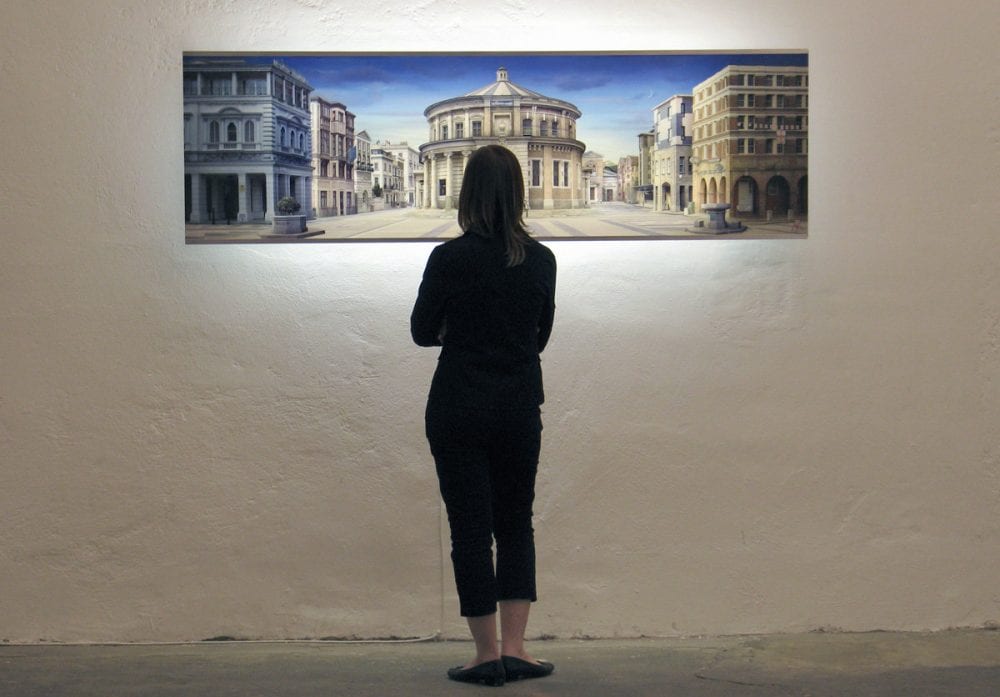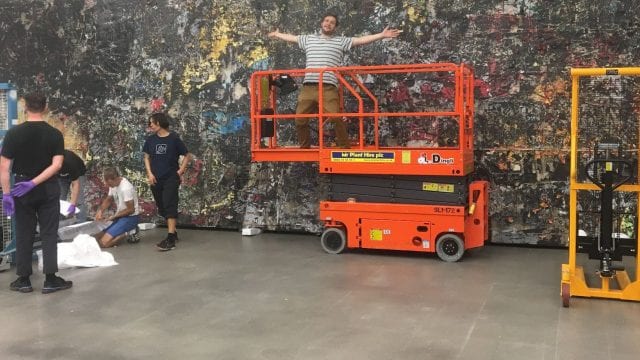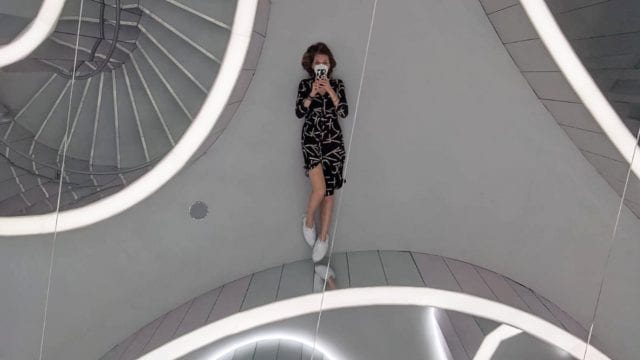Emily Allchurch, born in Jersey, Channel Islands, divides her time between London and her home in Hastings, East Sussex. Emily uses photography and digital collage to reconstruct Old Master paintings and prints to create contemporary narratives. Her starting point is an intensive encounter with a city or place, to absorb an impression and gather a huge image library.
Jersey – what comes to your mind?
The beautiful island where I was fortunate to be born and grow up, and the place where the rest of my family still live. 2020 was the first year in my life that I wasn’t able to visit. I really hope it will be possible for me to come over at some point in 2021. I love swimming in the sea and miss the crystal clear waters and clean, sandy beaches. Jersey is a very special place.
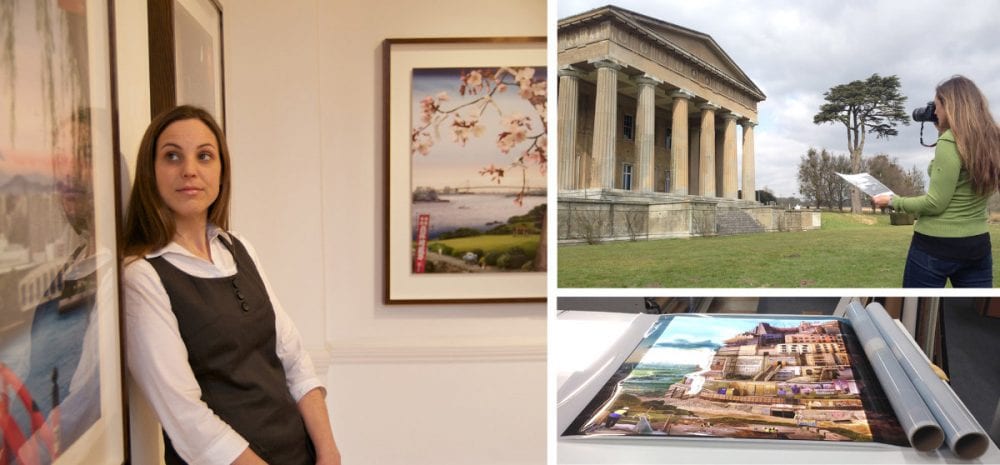
What is your most memorable experience or accomplishment?
My most memorable experience of recent years was the opportunity to travel extensively around Mainland China in 2019, collating my image library for my new series ‘Mirrored Cities’. With travel restrictions in place this past year I now feel more grateful than ever for this wonderful experience, which was supported through an Arts Council England ‘Developing Your Creative Practice’ Grant.
In 2018 I was delighted to be selected as a finalist in an all female shortlist, and also winner of the People’s Choice Award, in the Columbia Threadneedle Prize for Figurative Art. Until then the winners had tended to be painters, so it felt like an important breakthrough moment of recognition for digital photography and collage in contemporary art.
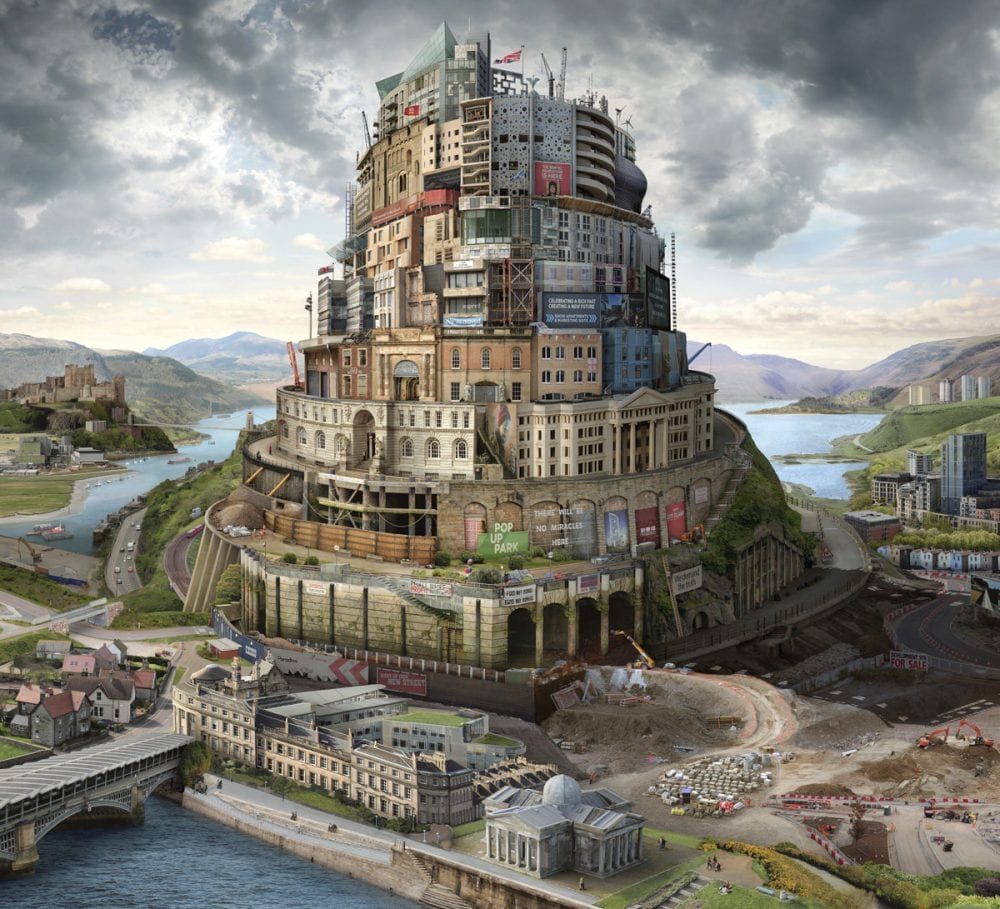
If you could own any artwork, what would it be?
This is a difficult question, as of course all the artworks I have paid homage to in my own work I greatly admire. If I had to pick one I would probably have to go with Pieter Bruegel the Elder’s ‘Tower of Babel’ (1563). I had the good fortune of seeing it first hand in the Kunsthistorisches Museum in Vienna when I was eighteen, and it left a lasting impression on me. I would love to see it again one of these days, especially as I have studied it so intimately whilst constructing my recreation ‘Tower of London (after Bruegel)’ in 2005.
What is your favourite way to connect with new art?
Nothing can replace seeing art in the flesh, but I do find Instagram a really useful tool to keep abreast with the projects and exhibitions of fellow artists and galleries. I also enjoy listening to recordings of artist’s talking about their work, like ‘Considering Art‘ series of podcasts with Artists by Bob Chaundy, which he has been collecting since the start of the lockdown last year. Bob interviewed me about my life and work in October 2020. Virtual exhibition tours have been a novel and illuminating way to experience exhibitions online during the lockdown. Chris Clifford was a successful early adopter of this for his presentations at Private & Public Gallery.
What opportunities this year of pandemic opened up for you?
My work is a long time in the planning, so I was fortunate, when the pandemic emerged, that I was already working towards a solo exhibition of my ‘Mirrored Cities’ series with my gallery in Hong Kong for the autumn of 2020. This enabled me to have a very clear focus to help navigate through a very difficult year, when the majority of my other planned projects and exhibitions were put on hold.
An unexpected and much appreciated outcome of the pandemic is that some of my collectors, spending more time than usual at home and with more disposable income, chose this moment to support me by buying my work. I also utilised UK-based artist Matthew Burrows’ brilliant initiative ‘Artist Support Pledge’, which offers the opportunity to buy artworks up to the value of £200 directly from artists, to help support them through this difficult time. Once an artist makes sales of £1,000 they commit to buying a piece of art from another artist for £200, and so on. It presented a unique opportunity for me to offer my work at affordable prices and, in turn to be being able to support my fellow artists.
Your favourite work of your own. How does this work reflect you?
I cannot choose a favourite artwork. As each work takes many months to create, working on one piece at a time, they evolve and reflect that time taken, and so they all hold a unique poignancy for me.

You are qualified as a sculptor. Do you remember the moment when you moved from sculpture to photography and subsequently your new technique of digital collage?
I studied sculpture as an undergraduate student at the Kent Institute of Art & Design in Canterbury (1993-1996). Signing up to courses in black and white and colour darkroom photographic printing as an MA student at the Royal College of Art (1997-1999) led me to experiment combining sculpture with photography and the projected image. I started working with Adobe Photoshop at this time to merge different environments: the everyday and mundane, with worlds of the imagination and fantasy.
It was four years after leaving college that I developed my digital collage technique for recreating old master paintings and prints from a contemporary perspective. I was invited to exhibit in a group show in a gallery space overlooking the Pantheon in Rome. I had become intrigued by the classical aspirations in the overlooked architecture of East London where I was living, prior to the Olympic regeneration programme. For the exhibition I decided to reconstruct an eighteenth century painting of the Roman Forum by circle of Claude, from the local architecture around me, and then physically transport it to Rome in order to realise its classical ambition. Whilst somewhat baffling the audience in Rome, it made total sense to me as a vehicle for expressing my ideas, and fortunately audiences in the UK got it when I later showed the work in London. I have really been exploring variations of the same idea ever since.
My transition from sculpture to the photographic form led me to use light-boxes to present my images, enabling a more physical interaction with the work. Drawing the viewer into the scene, the light-boxes maximise the theatricality, offering a window into another world.
What was the most challenging part of your latest work ‘Mirrored Cities’?
The most challenging part of my ‘Mirrored Cities’ project was deciding how to respond to the unravelling Coronavirus pandemic half way through making it. The intention for the series was to explore the parallels between the ancient trading port of Venice, and historical and contemporary counterpart locations in China, in an exploration of themes such as globalisation, mass tourism and trade. Early works, such as ‘Mirrored Cities I & II’ and ‘Italian Style Town (after Carpaccio)’ did just this, and are therefore teeming with the tourists encountered in all the locations I visited in 2019, much like the Veneitian narrative paintings they are inspired by.
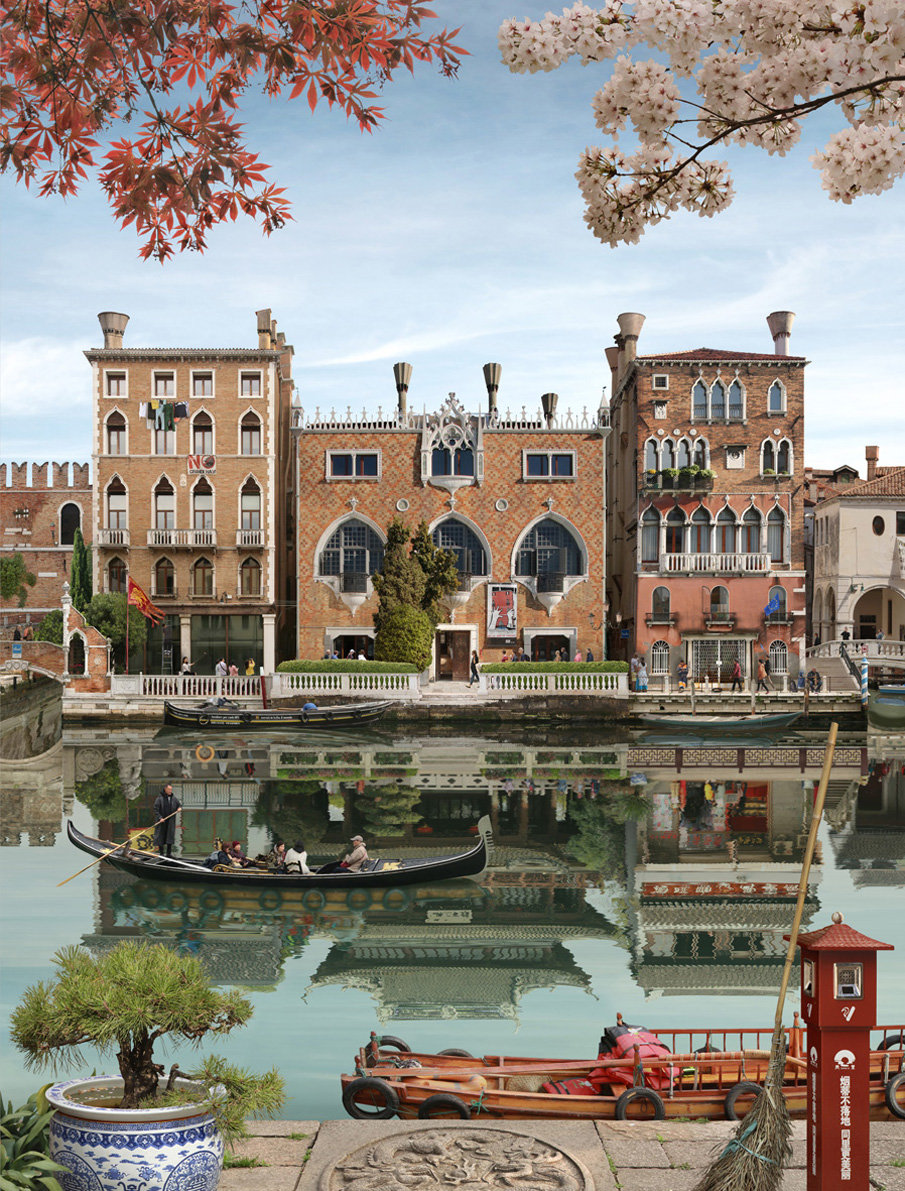
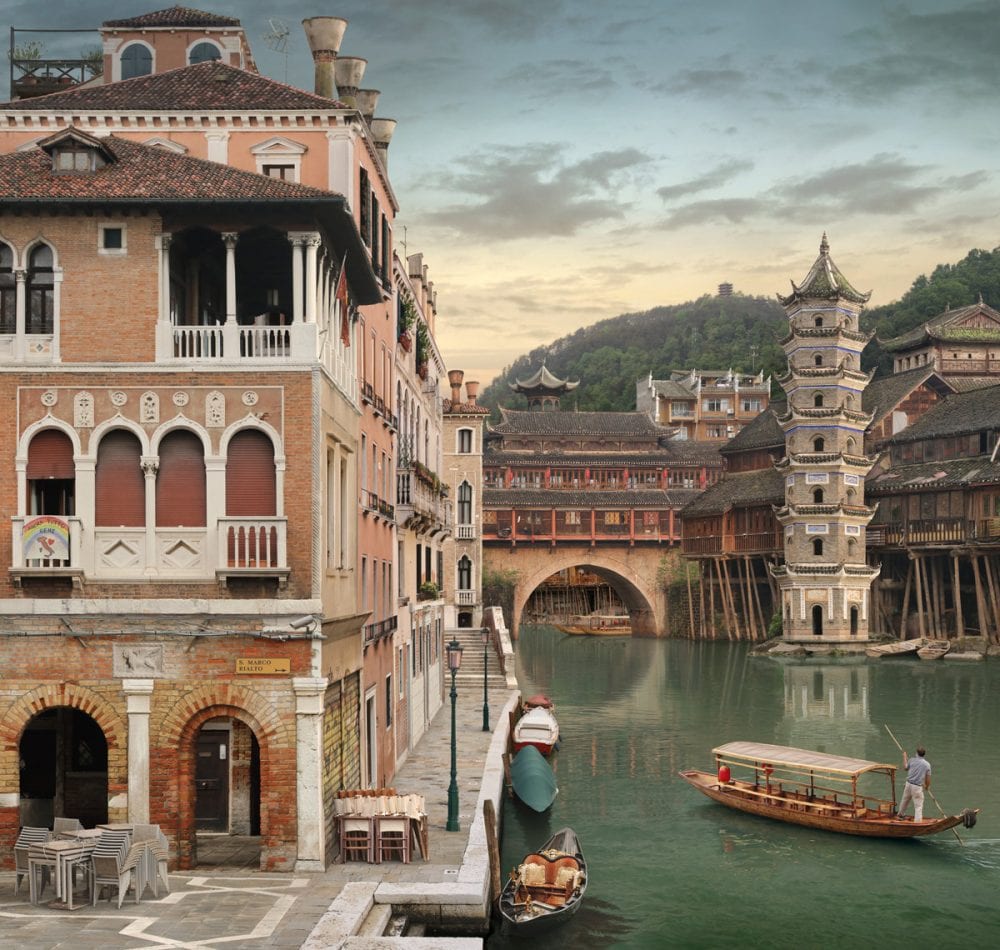
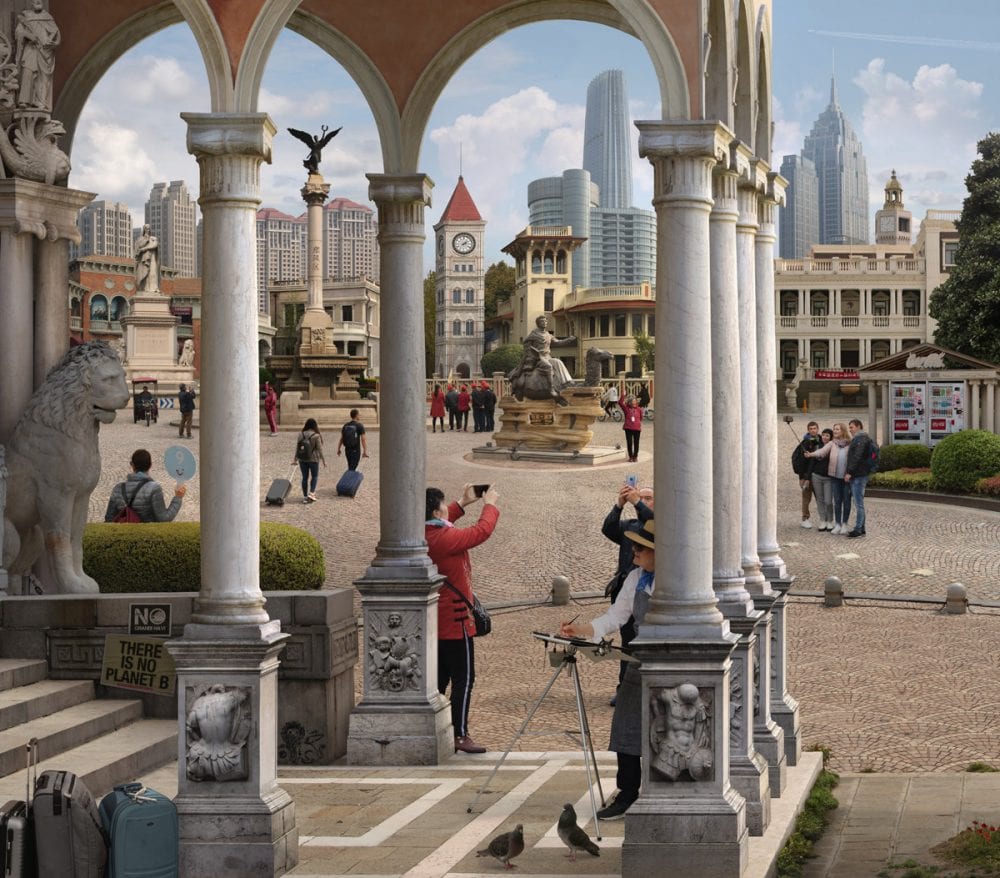
However, with the spread of Covid-19 in the initial wave of the pandemic, and subsequent lockdowns in China and Italy, and then finding myself working in lockdown in the UK, it felt right to take stock and shift the story to reflect the unprecedented times we are living through. Therefore, in ‘The Lion & The Phoenix (after Carpaccio)’, made during the peak of the first wave in March 2020, all the people have been removed and we are presented with an empty stage set. The tourist boats are tied up and the cafes closed. ‘Along the Road (after Zhang Zeduan)’, made later in the year, takes the form of a traditional Chinese hand-scroll to follow the journey of everyday people as they negotiate life before, during, and after the first wave of the pandemic.
Do you like group shows? Did you collaborate with other artists? What are the pros and cons?
Although artists like to have solo exhibitions so that they can present a whole body of work, I also think group shows are very important. It is useful to learn how curators see your work in context with that of other artists, and the connections they make between different practices and themes. They open up opportunities for new and interesting dialogues, and broaden the reach of your work, exposing it to a wider audience than could be generated on your own.
In your work, you connect past and present to inform the future. How do you see our future? What should we learn from this year in particular? Any new themes you plan to raise in your new work?
For a while I have been thinking about revisiting my ‘Worldscape’ series, which has an underlying environmental message. During the past year, whilst confined to my home county of East Sussex, I have been taking photographs on my walks of the landscape through the changing seasons. This has inspired me to think about using the landscapes close to my own home to make new work not only in celebration of the natural world, but also as a reminder of its precarious fragility.
Your work is always site-specific. Would you be interested in a commission about Jersey and why?
In 2012 I was commissioned by the States of Jersey to create an artwork to commemorate Jersey’s participation in the Queen’s Diamond Jubilee River Pageant. This was a unique opportunity, as an artist, to witness, record, and interpret an historic event for posterity.

Based upon the composition of Richard Paton’s painting of The Lord Mayor Proceeding to Westminster on Lord Mayor’s Day (1789-90) from the Guildhall Art Gallery, my re-creation combined photographs of London and Jersey, bringing the two locations together in a large-scale celebratory artwork. The foreground is comprised of photographs from Elizabeth Harbour, the mid-ground depicts the colourful festivities of the flotilla itself, with the Jersey boats in prominent position, all set against a dramatic 21st century London skyline.
Presented as a large-scale lightbox, the artwork has been on permanent display in the Royal Court in St. Helier since it was unveiled by His Royal Highness the Prince of Wales in July 2012. I would always consider other commissions, as and when they present themselves.
To view Emily Allchurch artworks, please visit her website.
